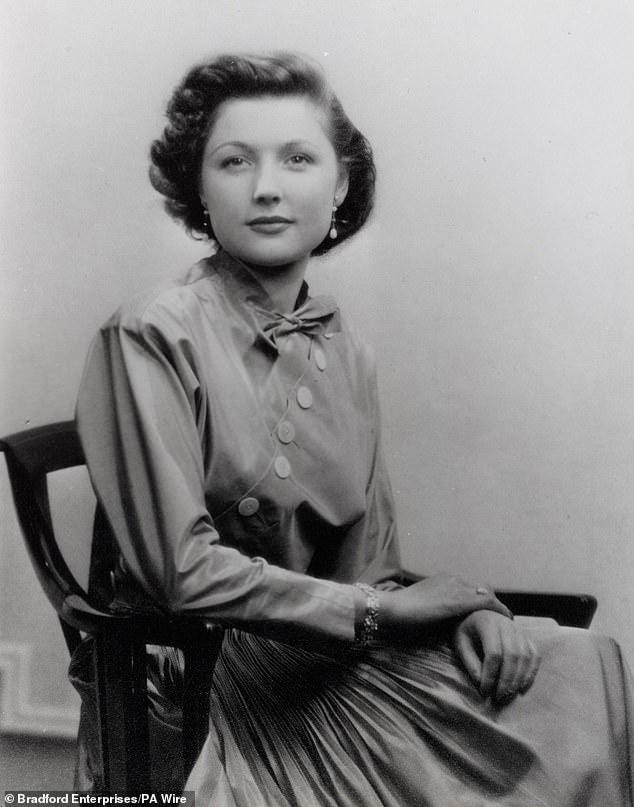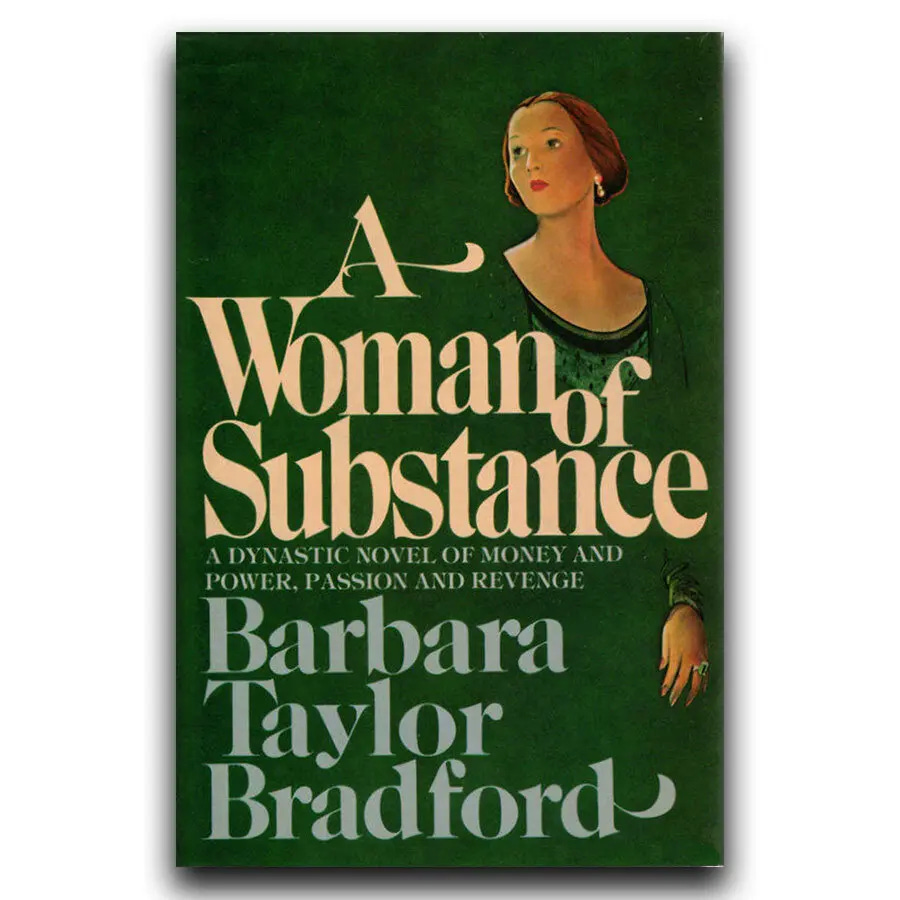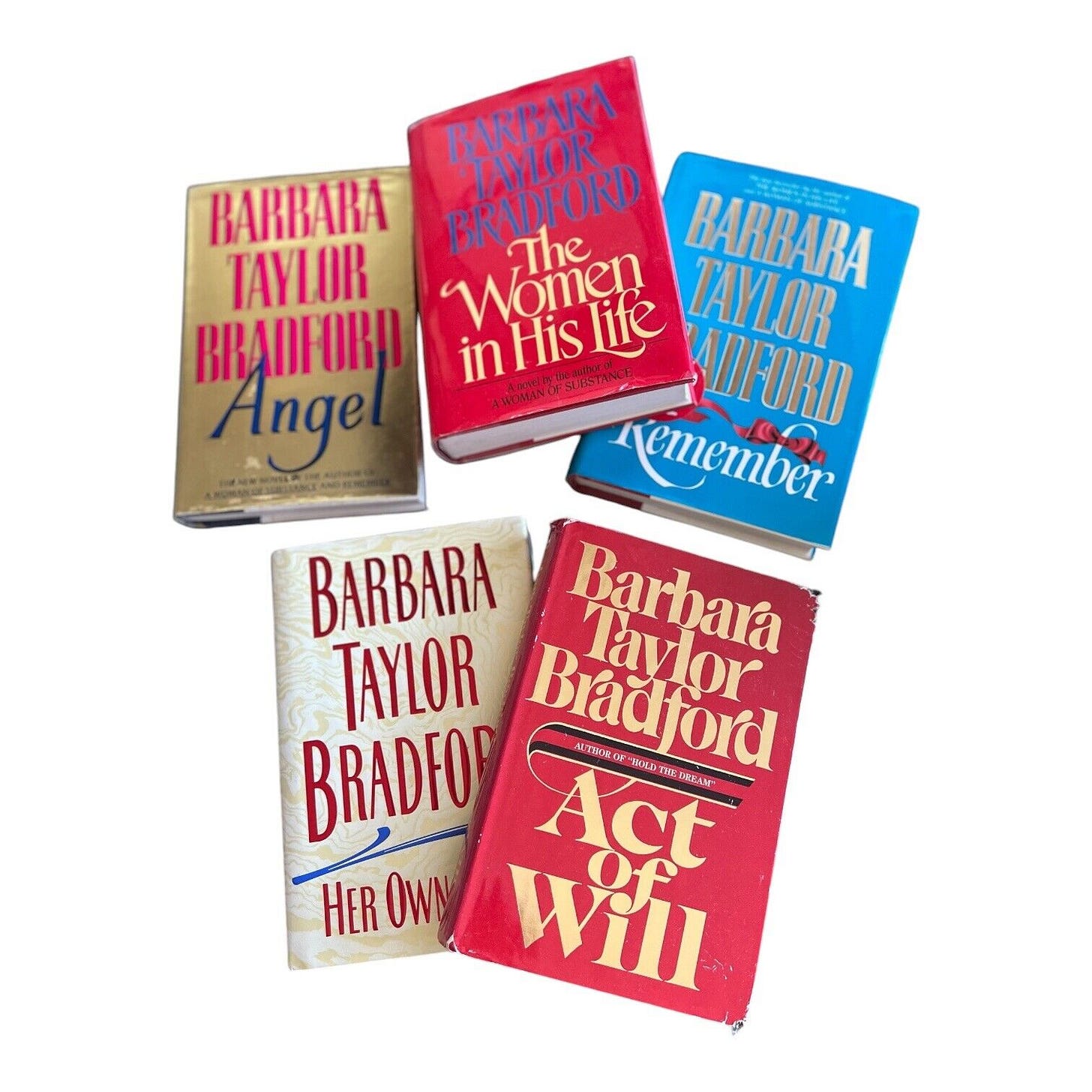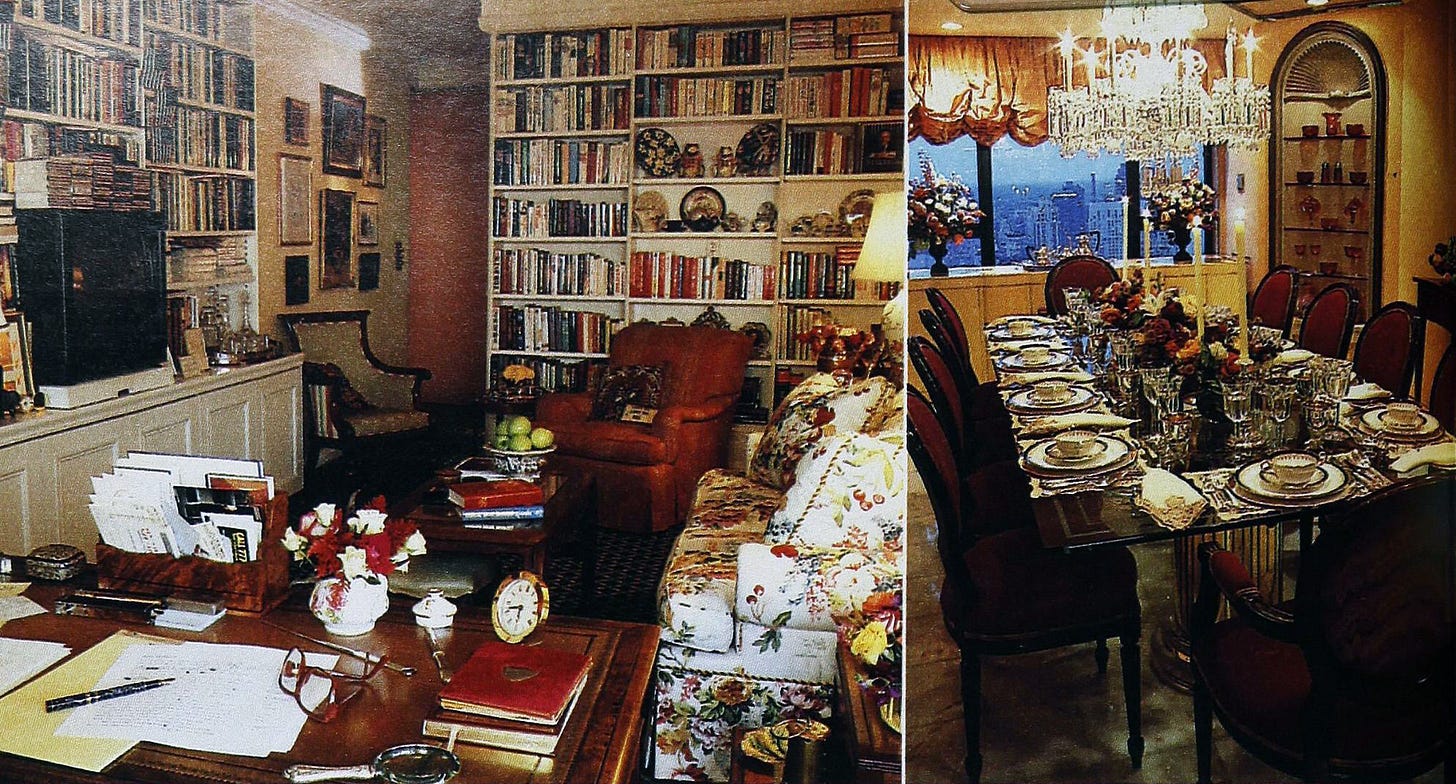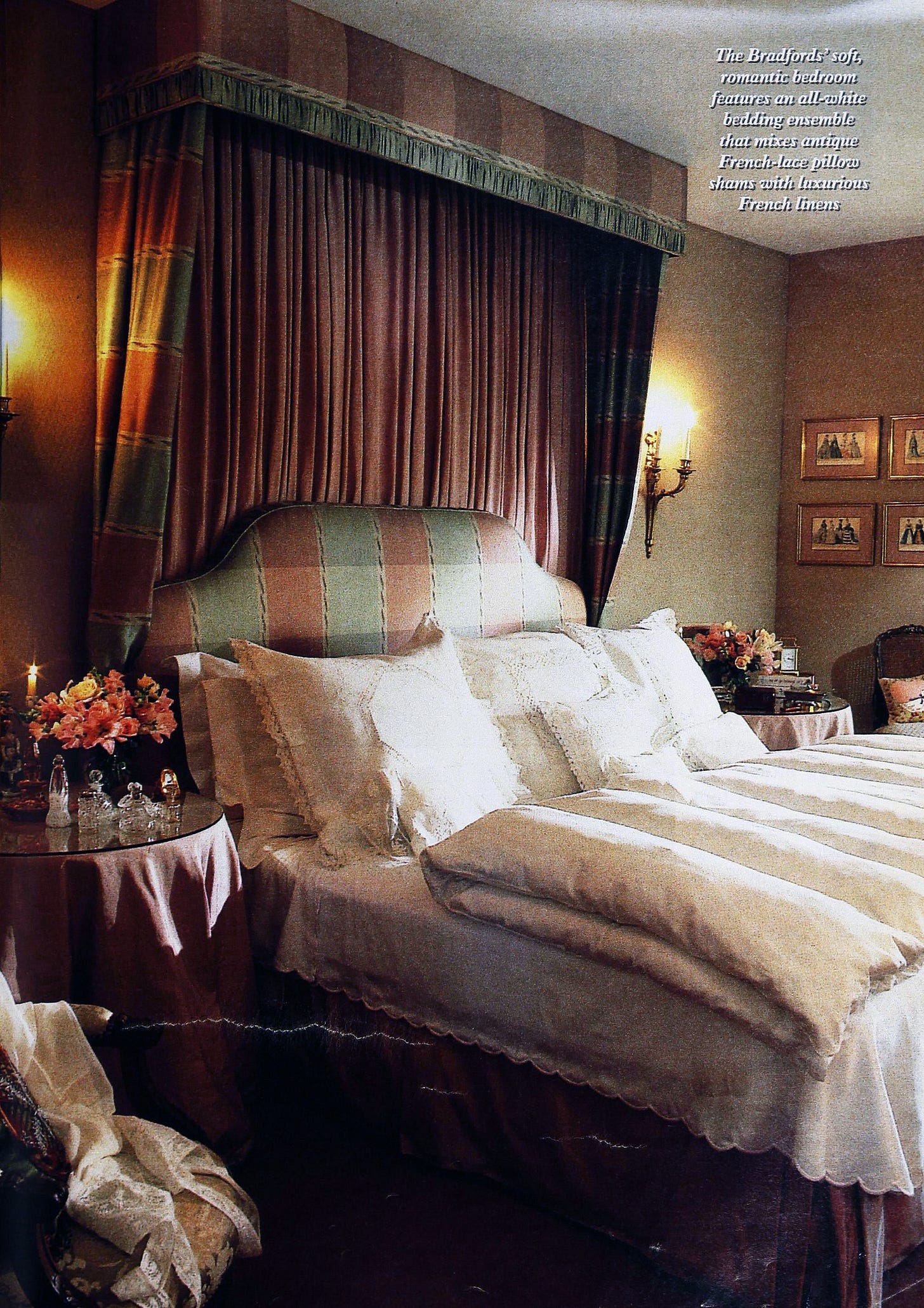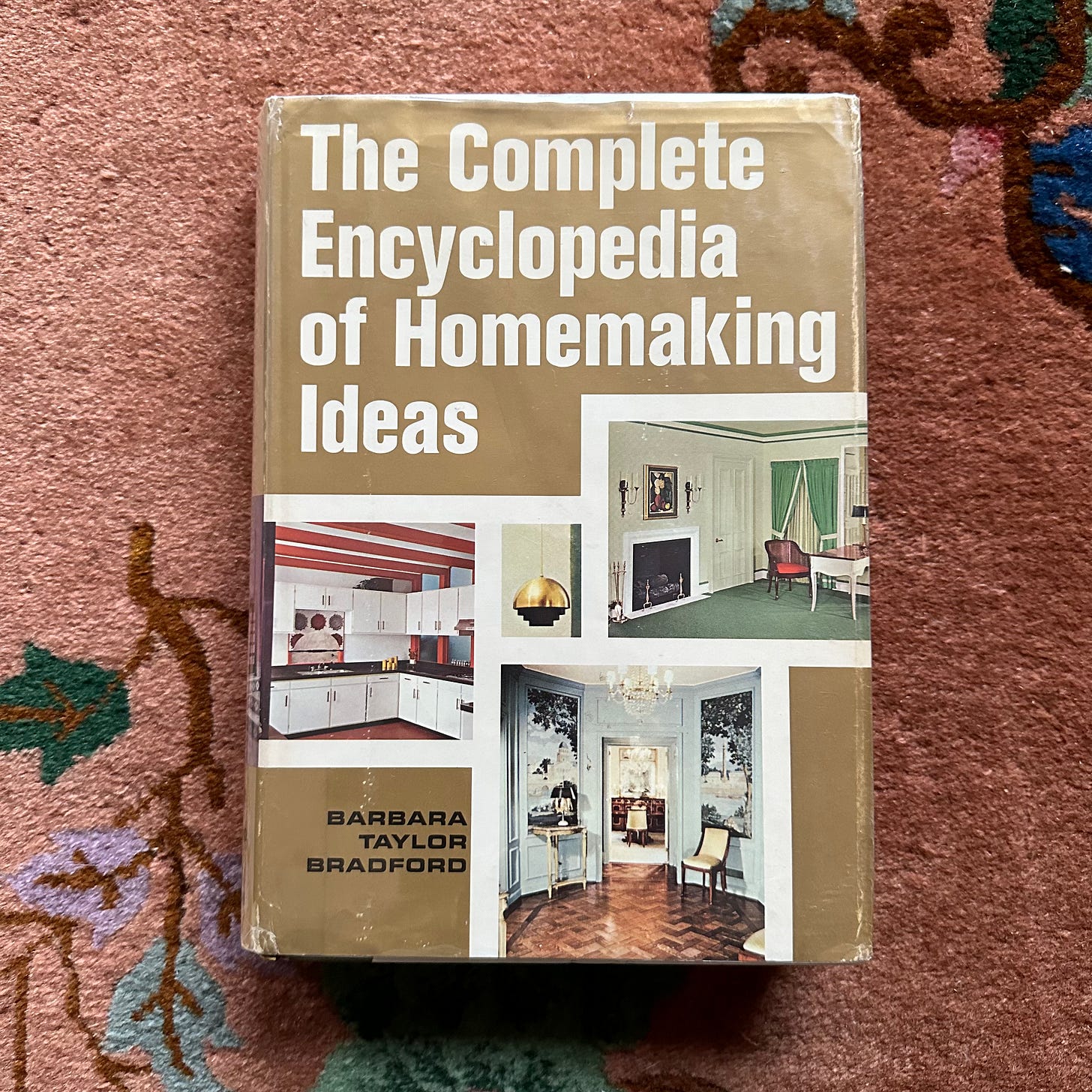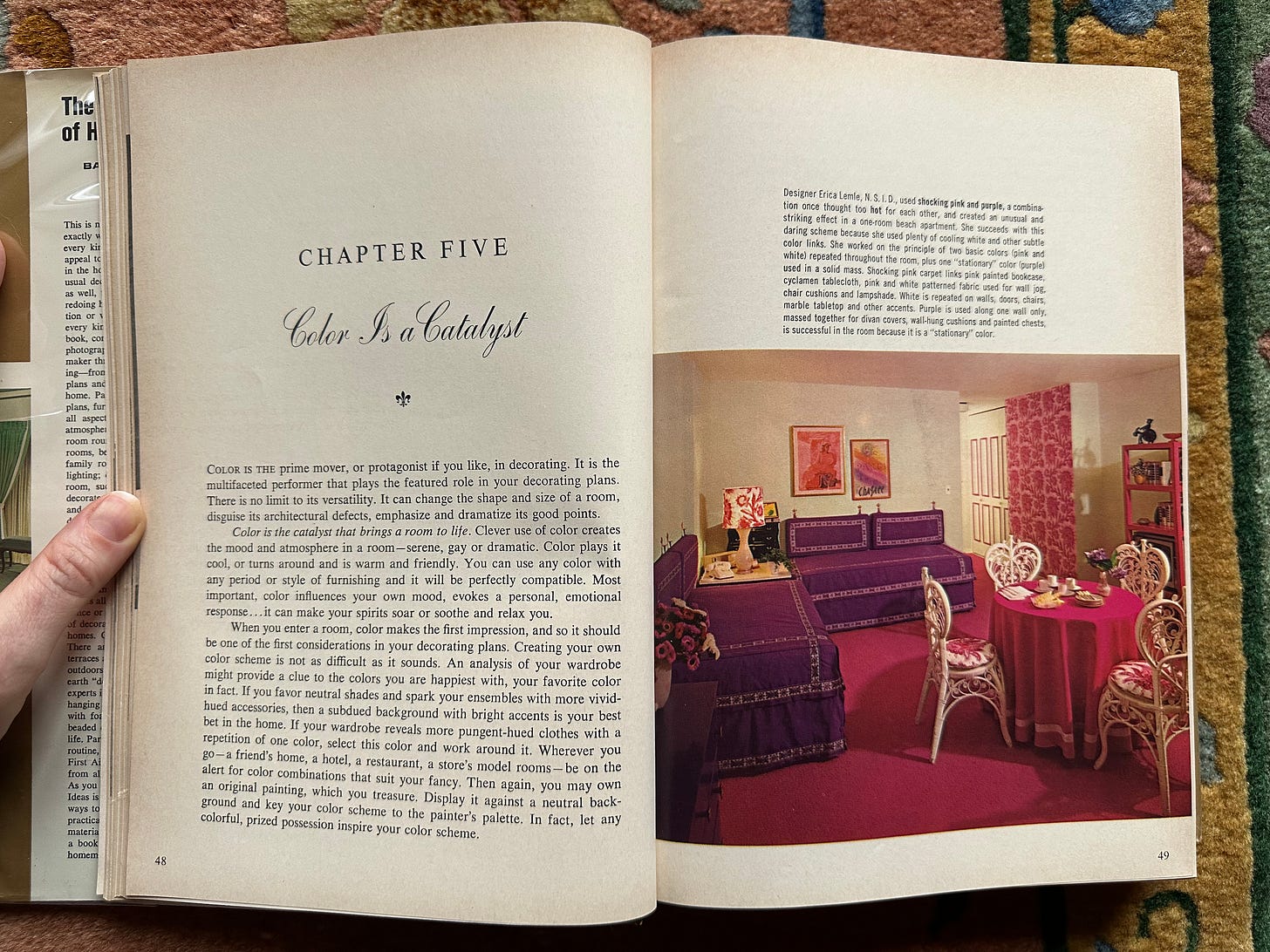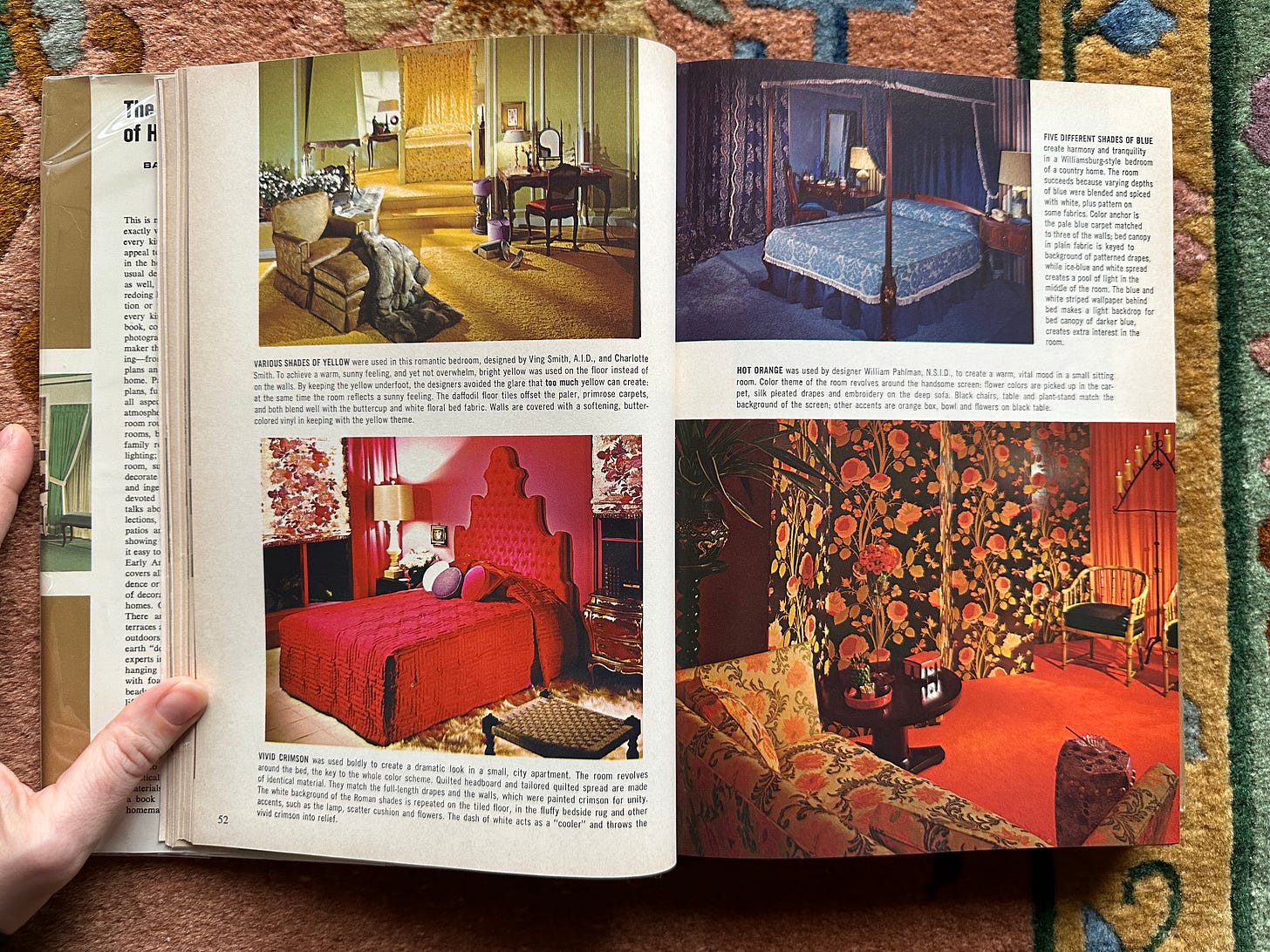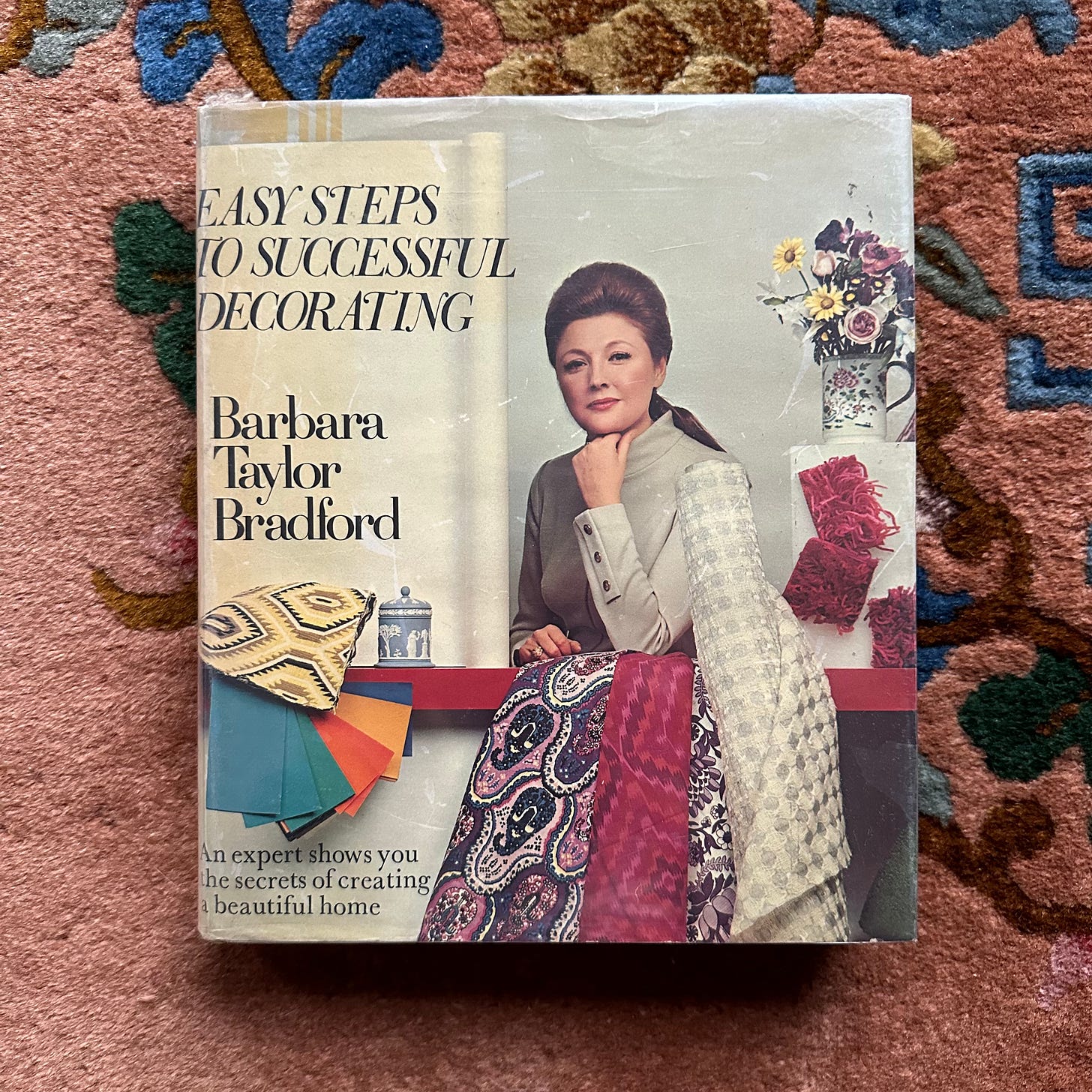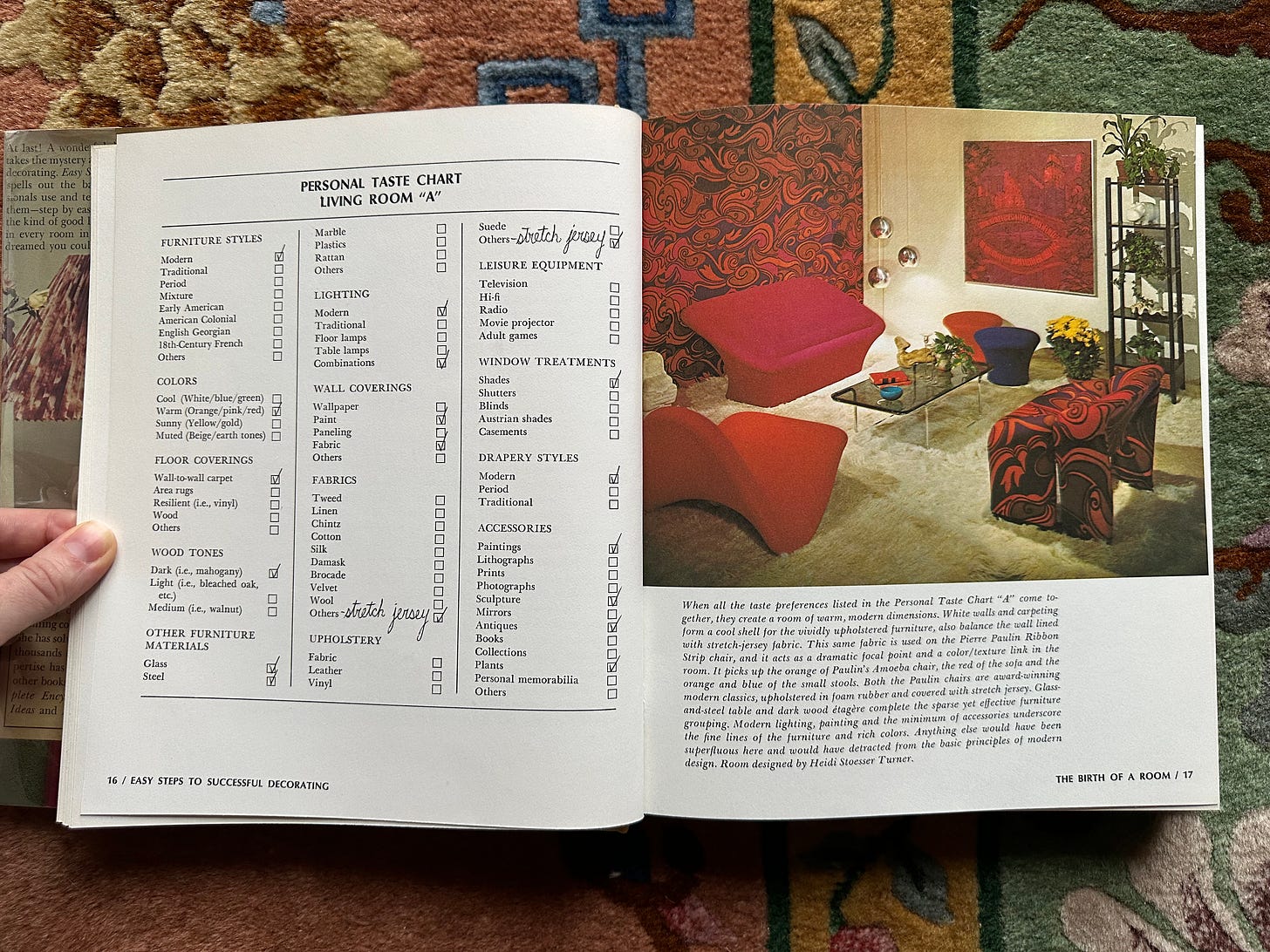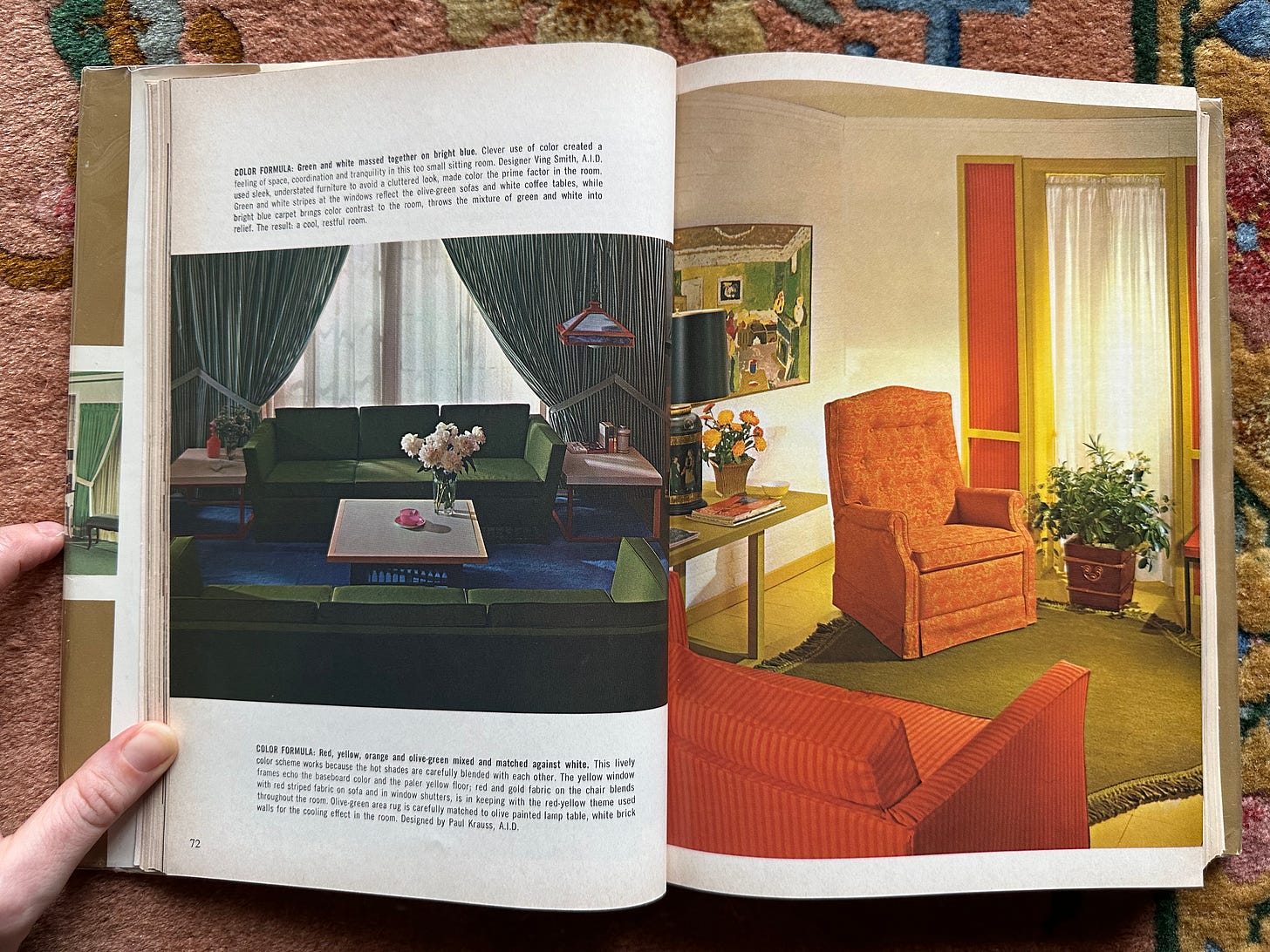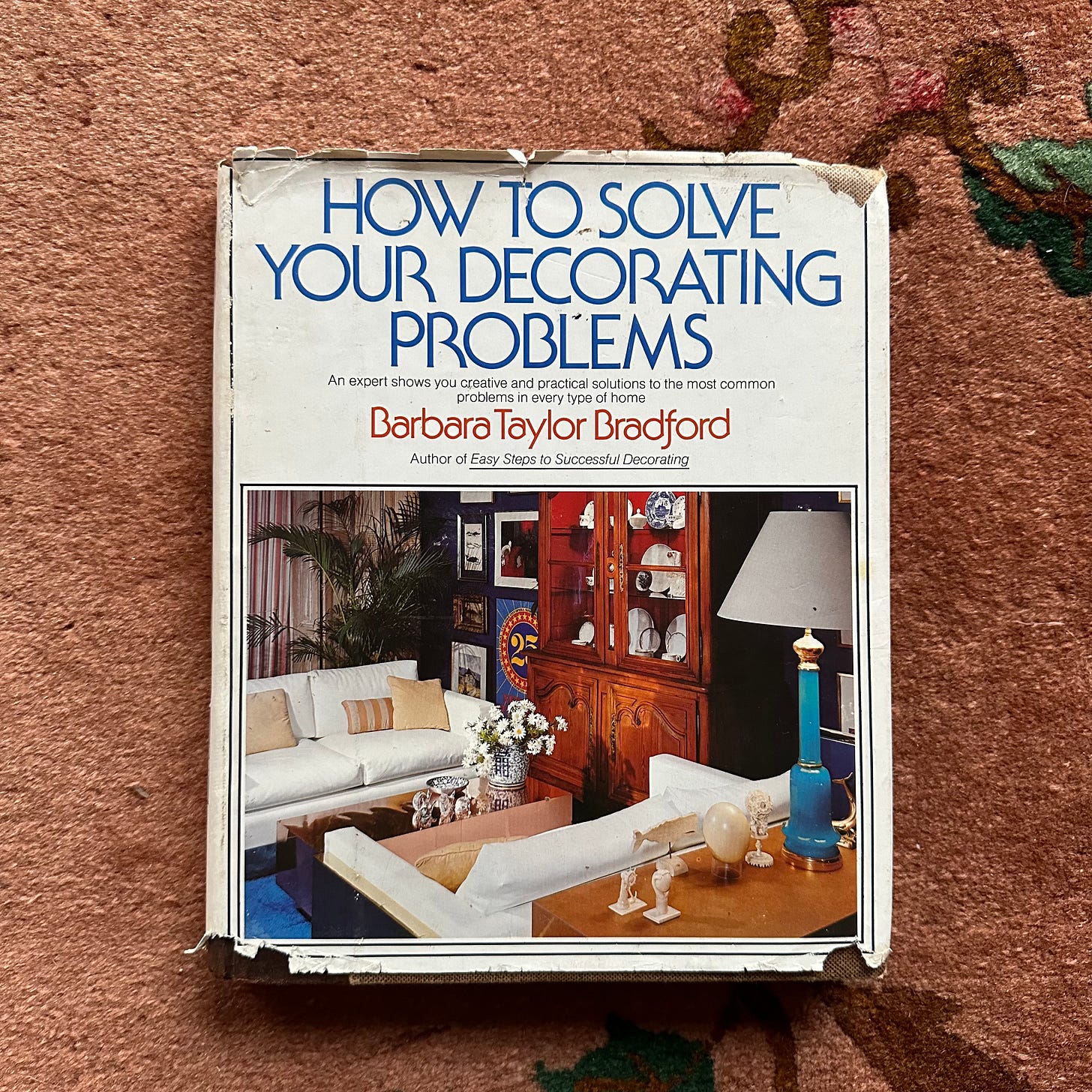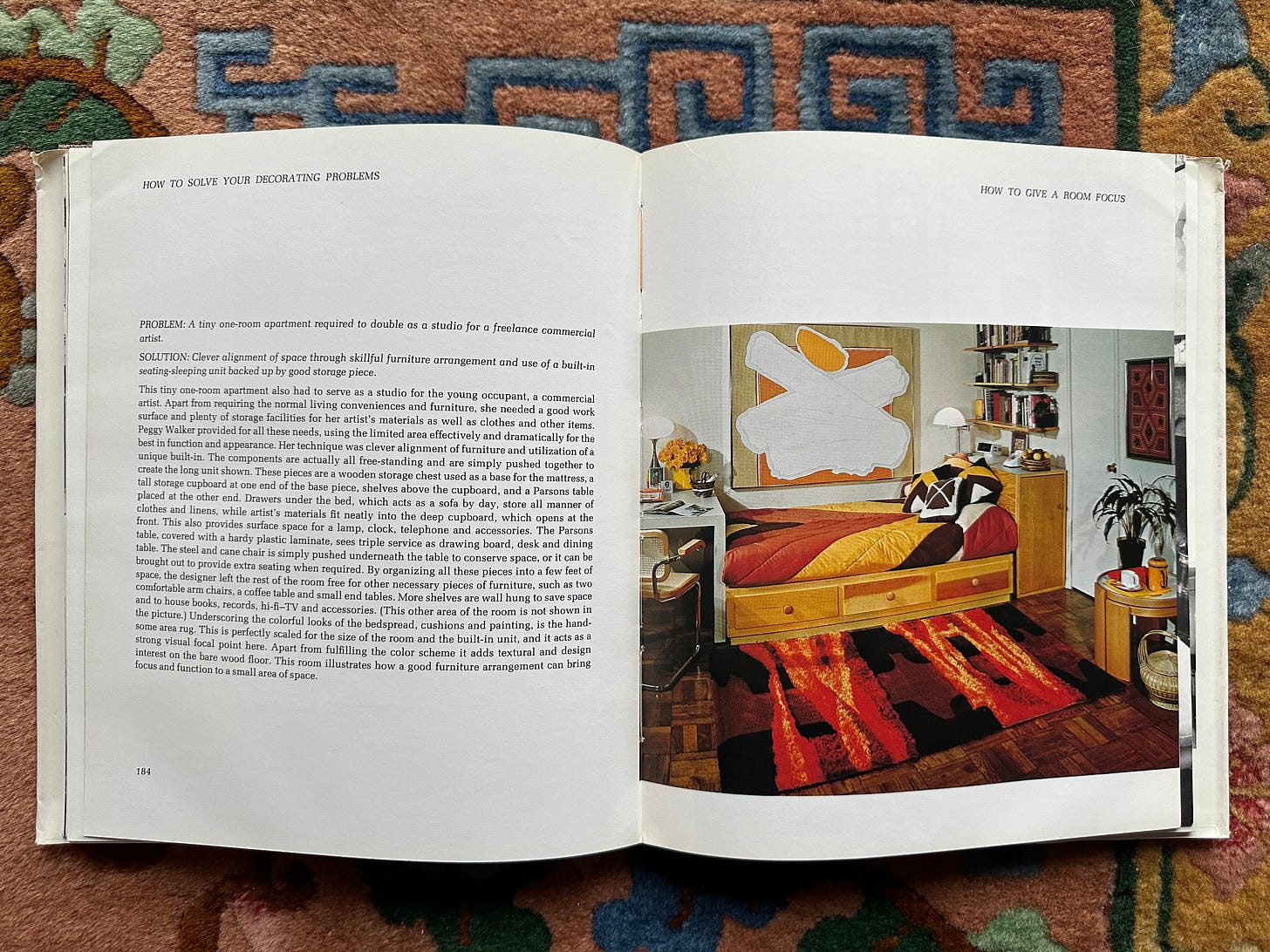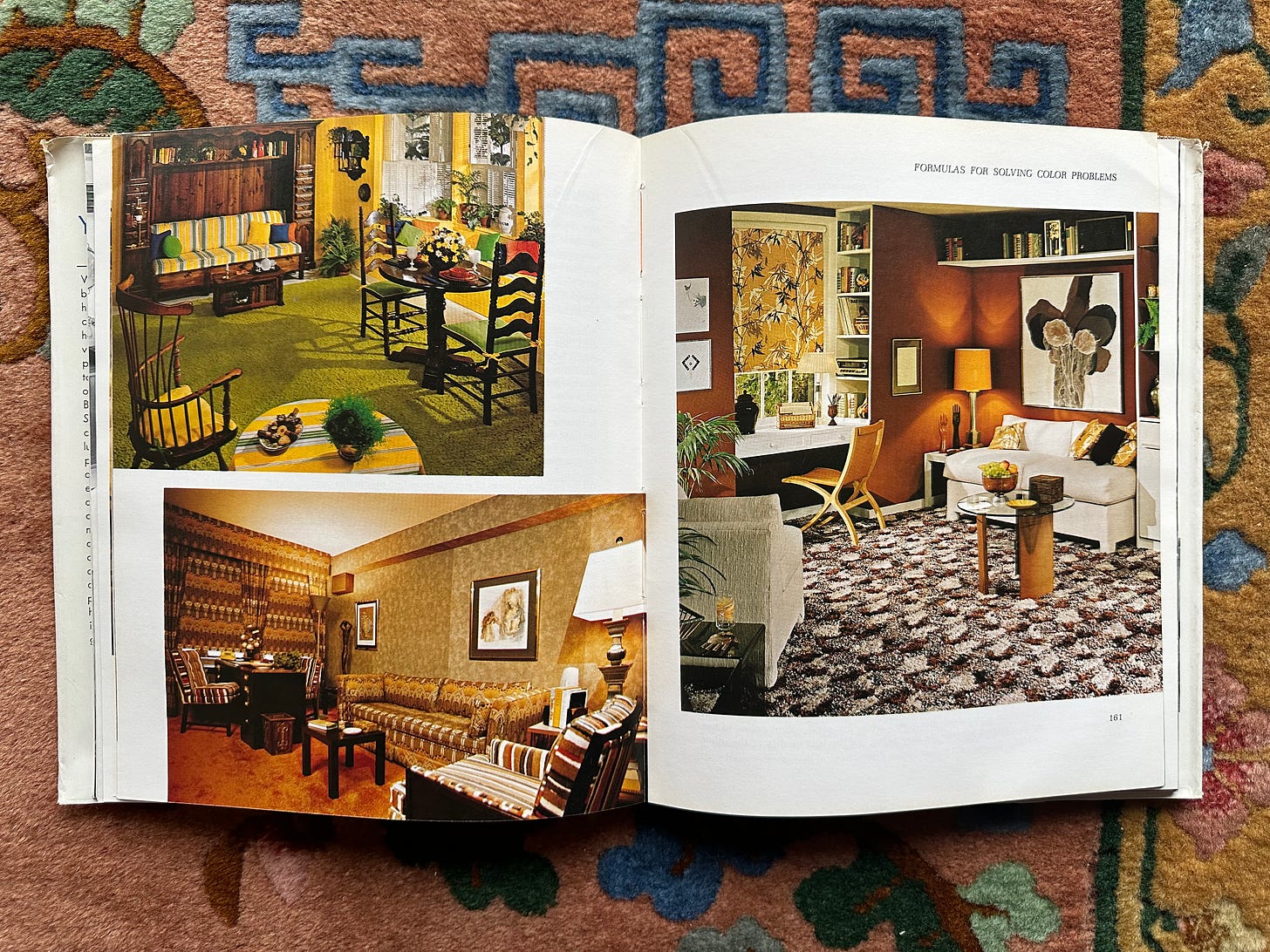Barbara Taylor Bradford & Interior Design
In Memory of the Best-Selling Novelist and Interior Decoration Expert (1933-2024)
The best-selling novelist Barbara Taylor Bradford passed away on November 24th, at 91. While best known as the author of commercial novels that “captivated readers for decades with chronicles of buried secrets, raging ambitions and strong women of humble origins rising to wealth and power,” and sold more than ninety million copies in forty languages, I’ve always found her path to this success—via interior decoration—most enthralling.
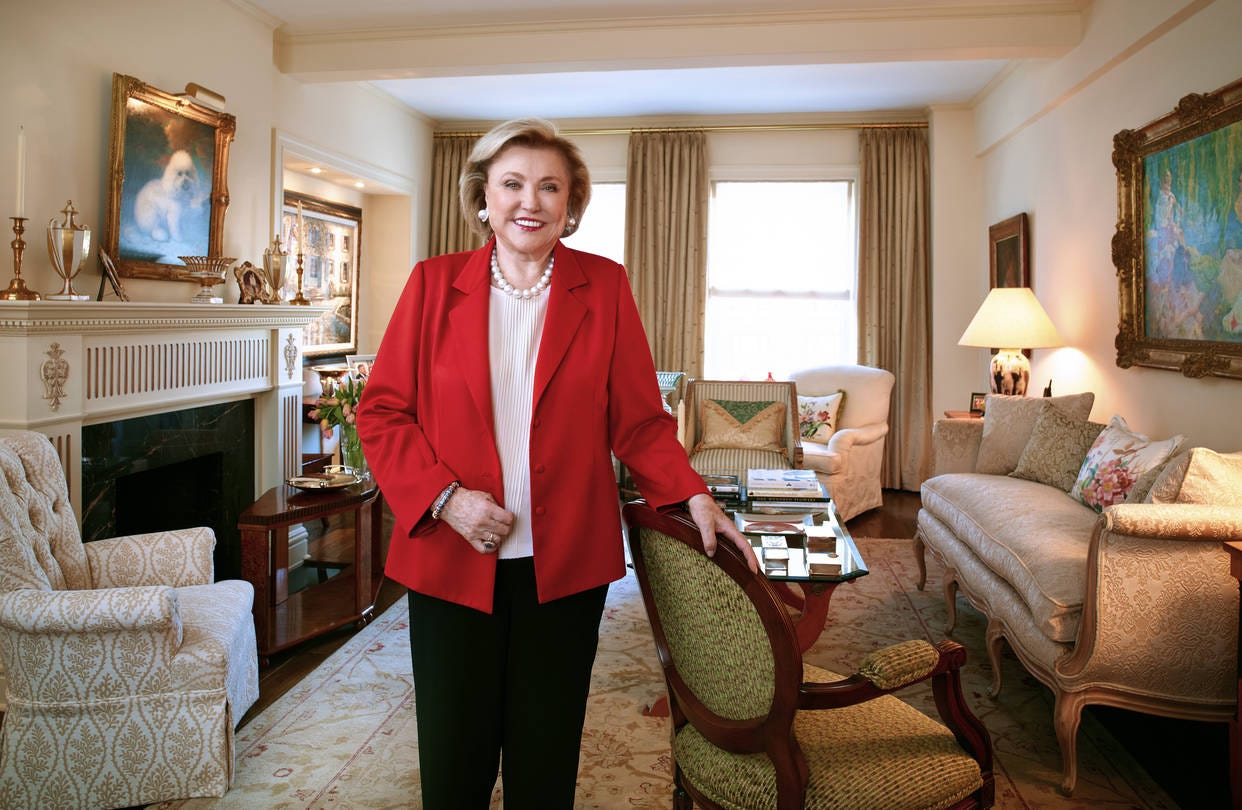
Similar to Shirley Lord (who I interviewed on my podcast Sighs & Whispers, which you can listen to on Apple and Spotify and read more about here), Barbara Taylor Bradford rose from humble beginnings to become a journalist, then married well, before turning her hand to fiction in her 40s. Born to a working-class family in Leeds in 1933, Taylor was an avid reader—Dickens, the Brontë sisters, Thomas Hardy, and Colette among her favorites. She sent a story to a magazine at ten years old; after receiving 7s 6d payment, Barbara said she knew she would be a writer someday. As she piled unfinished novels up in a drawer, Taylor decided to leave school at sixteen to take a job at the Yorkshire Evening Post; “I started as a typist. My parents wanted me to go to Leeds University, but I was determined to stick it out as a journalist. I wanted to be a crime reporter. In those days, though, women had to do women’s page stuff.” Swiftly, she rose to reporter (on that women’s page) before moving to London at 20 to become fashion editor of Women’s Own magazine; later she joined the London Evening News as a columnist.
In 1961, Barbara met the film producer and packager Robert Bradford on a blind date. The Berlin-born and French-educated Bradford moved to New York after World War II, taking a job in public relations before moving to Hollywood. While working as a VP for Samuel Bronston Productions in Madrid, on such classic films as El Cid, he spent time in London and was connected to Barbara by the English screenwriter Jack Davies. On Christmas Eve 1963, they married; he moved her to New York, installed in a duplex on the Upper East Side. As she later told The New York Times, “I didn’t have to work, but I got bored.” Earlier she had dabbled in interior decoration, apparently “helping friends with a couple of houses in the south of France and doing the Tunisian Embassy in London,” so she decided to try writing her principles of design down in book form. The Complete Encyclopedia of Homemaking Ideas (1968) was a success, selling 175,000 copies.
Returning to the skills she had picked up as a women’s page editor, the book’s publication led Bradford to start writing a column on interior decoration. Syndicated by Newsday (later by The Los Angeles Times), “Designing Woman” appeared three times a week in 150 newspapers across the United States for over thirteen years. Her columns covered every possible design question; one-room apartment living, storage space, and modern nurseries are just some of the subjects she tackled in the first year of publication. The endless queries Bradford received led to her next book, Easy Steps to Successful Decorating (1971).
From the introduction:
You've asked all the questions.
Now here are all the answers.
Answers to such puzzlers as "How can I make a room seem twice as large?" ... "How can I provide adequate storage in a mini-sized apartment?"... "What sort of treatment fits a bow window?"... "How can I determine which synthetic carpet fiber will best suit my purpose?"
... "Which is the right shade of green to use in a small room?"
As a nationally syndicated columnist and magazine editor writing about home furnishings and interior design, I have received thousands of letters from readers over the past few years. Letters posing the questions mentioned above, as well as countless others pertaining to decorating. I have also been asked similar questions when I have appeared on television and radio programs across the country.
Thank you for those letters and those questions. Not only have they helped me to write this book, but they inspired me to begin it in the first place. That is because they have made me increasingly aware that you really want to know how to provide comfort, beauty and convenience in your home without spending a fortune.
While pumping out a continuous flow of decorating articles, Barbara kept attempting to return to fiction; later telling Cosmopolitan that she'd started and abandoned four novels, and "when I put aside the last one, I asked myself why I didn't like it. And I answered myself, 'Because I'm bored.’” In 1975, at age 42, she decided to try again, this time writing something that truly kept her interest. “I knew that if I were ever going to be a novelist, this was the time,” she explained to The New York Times. “I wrote an outline, and my British agent, George Greenfield, showed it to Carolyn Blakemore, who became my editor at Doubleday. She was interested, but she wanted to see 50 pages. Three months later, I had written 192 pages. My American agent, George Gitlin, sent it all to Carolyn on a Thursday afternoon. The following Monday morning, Doubleday offered me a $25,000 advance.”
Though her contract only gave her a year to finish the book, it took her almost three years to finish the 1,525-page manuscript, a rags-to-riches tale following the life of Emma Harte from chambermaid to the owner of a retail empire. Cut down to 755 pages, A Woman of Substance came out in 1979, swiftly becoming a best-seller; by summer 1980, it was “in its second printing at an unprecedented 1,500,000 on the day Avon launched it in paperback.” Over the following decades, Bradford wrote 39 more novels; the final, The Wonder of It All, was published just last year. As she told The New York Times in 1979, “I’m not going to go down in history as a great literary figure. I’m a commercial writer—a storyteller. I suppose I will always write about strong women. I don’t mean hard women, though. I mean women of substance.” In her opinion, “The reading public of America is made up largely of women, and they want to read about women who have made a success of their lives. It’s a matter of identification. Most novels concerning money and power are about men.” Her tales of powerful women were obviously appealing—to the tune of some ninety million copies sold and ten television mini-series and TV movie adaptations (all produced by her husband).
“Bradford manages to convey sensuality without an overabundance of sex, sentiment without saccharin.” – Carol E. Rinzler, Cosmopolitan, June 1986
After two final books on design in 1979 and 1983 (Making Space Grow and Luxurious Designs for Apartment Living), Barbara did not again return to the study of interior decoration—but it never failed to make an impact on her work. Much of her novels’ heft (all were over 500 pages) came from her intricate descriptions, of both place and clothing; for Bradford, the beauty of her fictional settings was as important as her own home—as much a character as the powerful women and dashing gentlemen who populated her novels. The settings—manors, luxury stores, yachts, balls, etc.—created a mood of pure glamour, a true escape from reality. Her 744-page 1983 novel Voice of the Heart was described as offering “easily a month’s worth of sensuous slumming among the beautiful people, notably two poor-little-rich-and-famous girls—the younger the daughter of an earl, the older a rocketing film star. Bradford… meanders luxuriously through twenty years of flirtations and mésalliances, couturier wardrobes and stately homes, in this mousseline-de-sole romance meant to be read in a peignoir on a chaise longue whilst daintily nibbling scented chocolates.” Long descriptions like “The immense antique French chandelier, with its cascading slivers of crystal prisms and blades and elongated teardrops, flooded the black-and-white marble hall with a blinding blaze. It threw into bold relief the Gobelin tapestry soaring high on the staircase wall, the Rodin busts and Sevres palace vases in their respective niches and…” showed off her years of interior design knowledge while helping to place the reader in a world unknown to them outside of museums.
“I love to be surrounded by beautiful things. I like soothing environments that don’t jar the senses, particularly when I’m hard at work inventing characters and plots all day.” – Barbara Taylor Bradford, 1992
Among my collection of hundreds of interior decoration books, I have copies of all of Barbara Taylor Bradford’s—found before I realised that she was the same person as the novelist I first read at my grandmother’s. Below are some photos from three of her design books, along with some text from The Complete Encyclopedia of Homemaking Ideas that sums up her early design ethos. If you ever come across these books in a secondhand bookshop, I highly recommend picking up a copy.
Later, in the 1980s and on, her taste was very much “stately English home in the sky”; the Bradfords lived on the 47th floor of a building on East 52nd Street, where floor-to-ceiling windows displayed Manhattan’s skyline and the East River against a foreground of chintz and heavy wood antiques. There she worked until her death, in an office/library completely lined with her novels in every possible language.
For more on Barbara Taylor Bradford’s life, here is her NY Times obituary.
The Complete Encyclopedia of Homemaking Ideas (1968)
DECORATING IS ONE of the most challenging parts of homemaking. It can also be the most exciting.
Creating a beautiful setting for your family is a great adventure, to be embarked upon with enthusiasm and love. It also requires a great deal of thought, skill, and most important—time. In this instance, money is truly a secondary consideration. Some of the most charming homes have been decorated on the slimmest of budgets and a lot of imagination. Anyone with the right bank balance can fill a home with expensive furniture, but this does not ensure either its beauty or its success. On the contrary, such homes are usually disastrous, and what's even worse—dull.
This is mainly because they lack taste. Which brings us to that old question: What is good taste?
Defining good taste is almost impossible. But in the most general terms it is basically a combination of planning, integration, balance, clarity and skillful use of color. And suitability. Remember a room must be related to the people who are going to live in it; otherwise it will be a complete failure.
Decorating, like everything else of a truly personal nature, is highly individual. Every woman has her own tastes, ideas, and family needs: what delights one woman can be anathema to another. That is why it is difficult to make cut-and-dried decorating rules that are ideal for every woman.
One of the most basic things to remember is that the background you create is, to a great extent, a reflection of you. Think of decorating in the same terms as your wardrobe. The clothes you choose and wear, reveal to the world your taste and, equally as important, your personality. And so do the rooms you furnish, on a much grander, larger scale. Apply the same rules of good dressing to your home, and you won't go far wrong.
If you are clever, you will use your home as a backdrop for your personality and ideas. It can be an exciting extension of yourself. Remember, too, that decorating is a wonderful, creative way to express some of your interests and tastes, as well as those of your family.
What makes a room successful?
Four things are of equal importance. They are character (or personality), comfort, function and atmosphere.




